



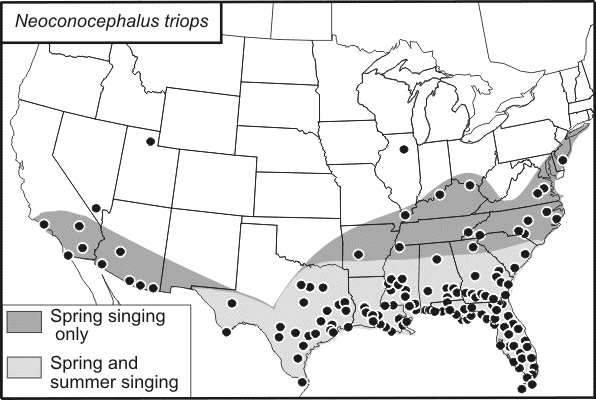
|
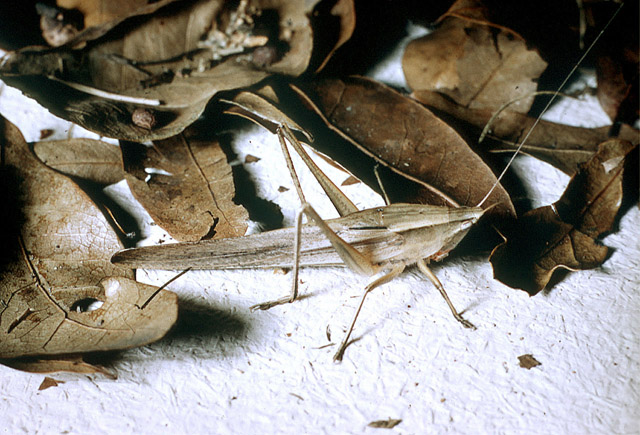
|
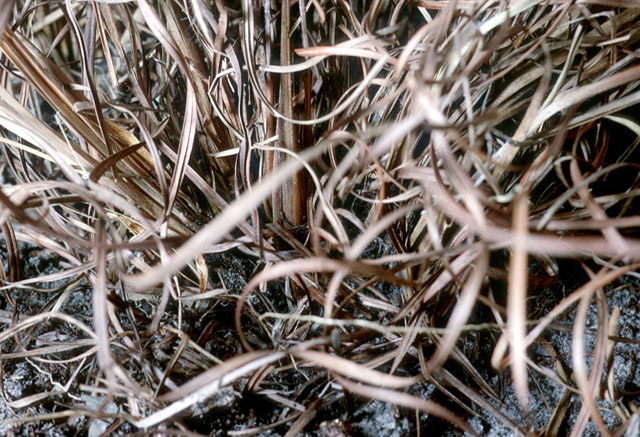
|

|
| map | brown male | brown ♂ in grass | green ♀ in grass |

|
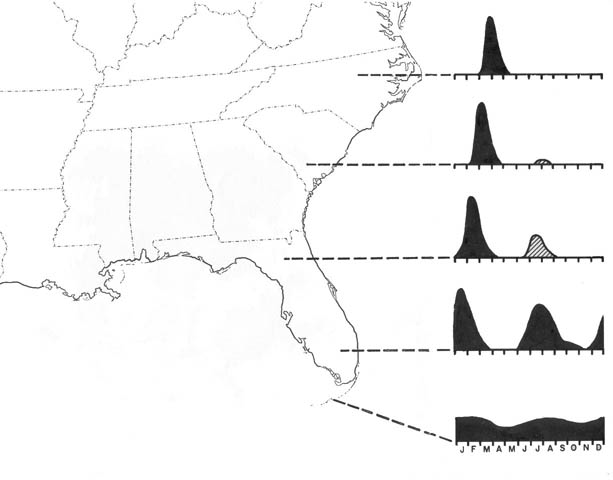
|
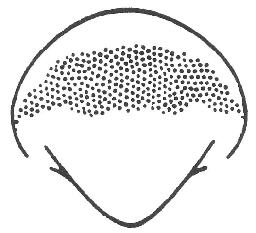
|
|
| developmental stages | life cycle | cone |


| Song: | There are two types of calling: (1) The summer song is produced by males that have not been dormant. Such males occur in areas with more than one generation each year. Their song is a buzz momentarily and regularly broken about once per second; it is easily distinguished from all other insect songs. (2) The spring song is produced by males that have overwintered. Such males occur in spring throughout the range of the broad-tipped conehead. The spring song begins like the summer song but soon shifts to a continuous buzz. It is made at a season when no other coneheads are buzzing continuously, except in south Florida, where the spring generation of N. pahayokee is doing so. |
| Song data: | Excel worksheet and chart (from spectrographic analyses). |
| Identification: | No other conehead has a cone that is wider than long. Forewings extending more than 11 mm beyond hind femora; ovipositor about as long as hind femur. Length 43-60 mm for males, 51-67 for females. |
| Similar species: | N. retusus has a cone that is longer than wide and the wings extend less than 11 mm beyond the hind femora; the ovipositor is longer than 30 mm. |
| Habitat: | Calling males are ubiquitous vertically (ground level to tree tops) as well as horizontally. Both sexes are strong fliers and come to lights. Juveniles and feeding adults occur in grassy areas; overwintering adults occur in thickets and woods. |
| Season: | This and Pyrgocorypha uncinata are the only coneheads that spend the winter as reproductively inactive adults. In the one generation area (see map above), adults mature in fall and sing April–June. In the two-generation area, adults occur at all times except early summer and sing February–May and July–August. In south Florida, adults occur and sing year-round. |
| Seasonal data: | N. Fla. data. |
| Remarks: |
This species is common throughout the Caribbean, where it produces only the summer song.
The spring and summer songs differ not only in phrasing but also in wingstroke rate (Whitesell and Walker 1978). In no other species of katydid or cricket does an individual's past history affect its wingstroke rate or its phrasing. No physiological or evolutionary explanation is evident. In the area where summer singing occurs, the summer adult population represents only a partial generation: some of the progeny of spring adults do not mature until fall and do not sing until spring. Hence each spring-adult population consists of progeny and grand progeny of the previous spring-adult population. Each summer-adult population consists only of progeny of the previous spring-adult population. The size of the summer-adult population relative to that of the spring-adult population increases southward (Whitesell 1974). Most summer males and females are green (>80%). Most overwintering males are brown (>95%), but most overwintering females are green (>65%). Assuming that green has the advantage in concealment in the summer and brown in the winter, how does one account for such a high frequency of green overwintering females? J. J. Whitesell and others have noted that the males die, often from tachinid parasites, after a brief period of springtime singing, whereas females continue to live and lay eggs into early summer. [More on brown/green color dimorphism.] |
| More information: |
Subfamily Copiphorinae, genus Neoconocephalus. |
| References: | Burk 1982, Josephson 1985, Whitesell 1974, Whitesell & Walker 1978. |
| Nomenclature: | OSF (Orthoptera Species File Online). |

|

|